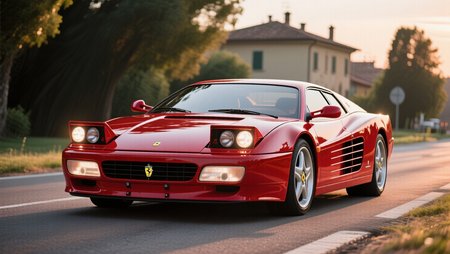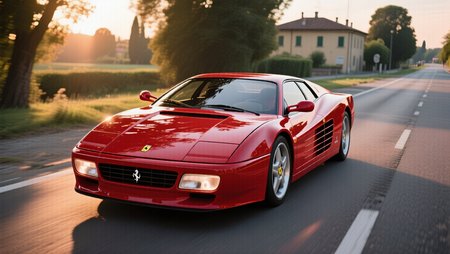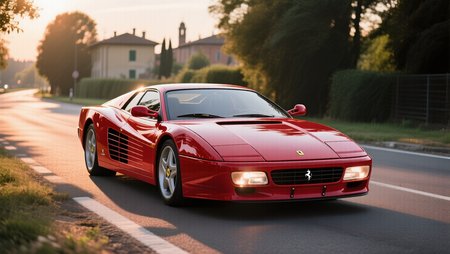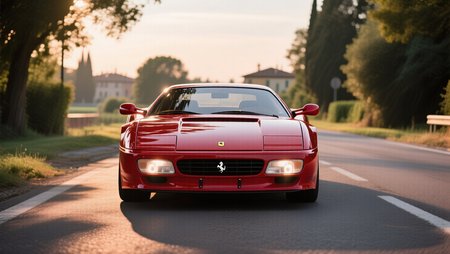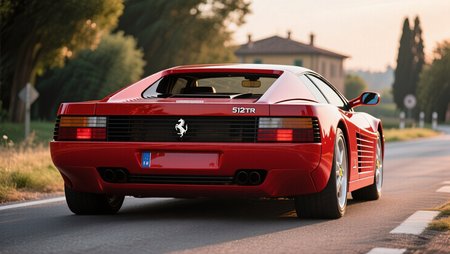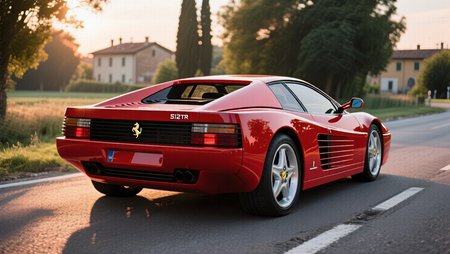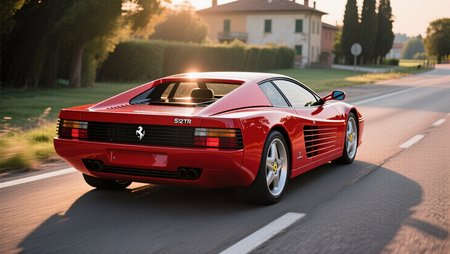The Ferrari 512 TR (1991-1994) – An Evolution of Supercar Excellence
The Ferrari 512 TR, launched in 1991, stands not as a radical departure but as a masterclass in the art of automotive evolution. Born from the celebrated Testarossa—an icon of 1980s flamboyance—the 512 TR was Ferrari's calculated answer to a new decade demanding more than just brash style. Its name, a nod to its heritage, signifies a 5-liter, 12-cylinder engine and the iconic Testarossa lineage. While the Testarossa had earned its place on millions of bedroom walls as a quintessential "poster car" , the 512 TR was conceived to refine this formula, enhancing both its dynamic capabilities and its overall sophistication. It was strategically positioned as the flagship 12-cylinder grand tourer in Ferrari's early 1990s lineup, effectively bridging the gap between the more accessible V8 models and the extreme, limited-production F40.
Pininfarina, the legendary design house behind the Testarossa, was tasked with giving the new car a "cosmetic facelift" that would bring it in line with the "softer, more subtle design approach" of the 1990s. The most significant external change was a redesigned nose, which adopted a distinct "family resemblance" to the smaller Ferrari 348, including a new trapezoidal grille adorned with the iconic prancing horse. This revision also addressed a practical issue, as the Testarossa's low front spoiler was notoriously prone to scraping. The visual updates extended to the engine cover, with a new satin black finish, and the wheels, which were upgraded from 16 to larger 18-inch Speedline rims featuring an elegant new five-spoke design. Inside, Ferrari made a concerted effort to improve comfort and ergonomics. The cabin was modernized with a redesigned center console and new seats that featured "smaller bolsters," making entry and exit easier. Despite these improvements, the car retained a quirky, "very Italian" driving position with offset pedals and a steering wheel that was slightly askew, a characteristic that enthusiasts often cite as part of its charm.
Underneath the refined bodywork, the 512 TR underwent a comprehensive mechanical overhaul that was far more than a simple update. The tubular steel chassis was revised to provide a significant 13% increase in torsional rigidity. Critically, the entire engine and gearbox assembly was repositioned 30mm lower in the chassis, which dramatically lowered the car's center of gravity and improved its road-holding and handling. The suspension was retuned with stiffer springs and new gas-filled shocks, while the steering ratio was quickened to provide better feedback. Braking performance was also significantly enhanced with larger, ventilated, and cross-drilled discs paired with four-piston calipers. The culmination of these changes was a profound transformation in the car's character. While the Testarossa was revered as a "wonderful GT car," the 512 TR emerged as a more focused "sports car" – "lighter, more responsive, and highly polished".
At the heart of the 512 TR was an extensively upgraded version of the Testarossa's 4.9-liter flat-12 engine. Modifications included a new Bosch Motronic M2.7 fuel injection system, redesigned inlet plenums, larger valves, and an increased compression ratio, all of which contributed to a notable performance boost. Power output climbed from 390 bhp to 428 bhp for European models, and torque increased from 354 lb-ft to 362 lb-ft. This translated to a quicker 0-62 mph time of 4.8 seconds and an increased top speed of 195 mph. The engine became "dramatically more responsive" and produced a "better tone" and a "wonderful engine sound," adding to the visceral driving experience. Power was delivered through the famed "dog-leg" gated shifter, an element praised for its mechanical feel, which made drivers feel as if they were "piloting something purely mechanical".
The Ferrari 512 TR's legacy is one of successful refinement and enduring desirability. With a production run from 1991 to 1994 and a total of 2,261 examples built, it was a commercial success. Notably, it "outsold the all-new Lamborghini Diablo by around three to one," demonstrating that its blend of improved performance, usability, and established brand lineage was a winning formula. While the Diablo offered more raw power and a "zany" aesthetic, and a contemporary Porsche 911 Turbo was lauded for its precision and usability, the 512 TR occupied a unique space, offering an emotional, visceral driving experience that made drivers "giggle" rather than just "smile". Today, the 512 TR is considered by many to be one of the most underrated V12 Ferraris ever built, providing a perfect balance of rarity, performance, and presence that makes it both a usable classic and a sound investment. Current market values for these cars reflect this, with the average sale price hovering around $282,721. The 512 TR remains a testament to Ferrari’s ability to evolve a legend without compromising its soul.
Description
Initial release of the LoRA.
